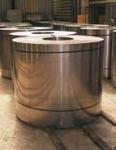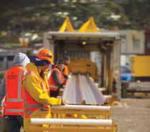Sustainable Transport
By Graham Hepburn
As sustainability becomes more of an issue around the world, attention has been focused not only on how a product is made but also how raw materials are collected and how the product is distributed.
Transporting materials to a factory and then shipping out the finished product are important factors in assessing its environmental impact through a life cycle assessment (LCA), also known as life cycle analysis.
An LCA looks at each stage of a product’s life from-cradle-to-grave, beginning with how the raw material is extracted and transported, processed, manufactured and distributed, and then how it is used, repaired or maintained before it is disposed of or recycled. Because of the emissions involved in transporting raw materials and the finished product, more emphasis is being placed on producing and using goods locally.
Metal roofing in New Zealand is a classic example of a locally made and used product as no iron ore needs to be imported for its manufacture.
Unlike other steel makers, who mine and transport iron ore, New Zealand Steel uses iron sand from Waikato North Head, where titanomagnetite is extracted before being mixed with water and pumped through a slurry pipe to its plant at Glenbrook, saving the environmental impact of using large trucks.
Meanwhile, Pacific Steel, a division of Fletcher Building, makes all its steel from scrap - including around 90,000 scrap cars each year - to manufacture products such as reinforcing steel and wire. The remaining scrap steel collected in New Zealand makes up the majority of our scrap metal exports, NZ’s 17th largest export earner.
New Zealand Steel is the country’s sole producer of flat steel products and manufactures coil and sheet for use in building cladding and other industries. The coil may be metal coated with zinc – commonly known as galvanized steel – or a combination of aluminium and zinc (ZINCALUME®) and may be painted on its own coil coating line to produce COLORSTEEL® or trucked a small distance to an independent coil coating line (Pacific Coil Coaters) to produce ColorCote®.
Zinc alloy coated steel coil is also sold to NZ metal tile manufacturers, who do paint finishing in-house.
Steel coil can be easily and economically transported around the country and each coil can produce roofing for four to five homes. With improved technology, a tonne of material now goes further because it has become a lighter product.
Making roofing from high strength steel coil, which is about twice as tough as the softer steels previously used, means thinner gauges can be used. This dramatically cuts the amount of steel needed and makes for a much lighter product.
The typical gauge now used in longrun, for example, is 0.40mm, nearly 30% thinner than 0.55mm which was traditionally the thinnest gauge available. This lighter product is not only more durable because of improved paint systems but easier and more efficient to transport. Because it is lighter, it requires less framing to support than heavier roofing materials and that means not having to transport so much framing to building sites. And because a steel roof is approximately 1/10th the weight of a concrete tile roof and steel has a greater density than concrete, a truck can carry the equivalent of around 17 metal house roofs compared to a single concrete tile roof.
Due to the fact that metal roofs are widely used and there are many roll-forming operations around the country, only the densely packed steel coil is shipped any distance. The actual roofing products are made at local manufacturers thus requiring only minimum transport to the building site, and because roofing is cut exactly to size only what is needed is transported. The popularity of metal roofing means there are installers nationwide working in their local communities and therefore they do not have to travel long distances for roofing jobs.
When metal roofing has reached the end of its life it is easily removed and transported so that it can be recycled, beginning the process all over again.



